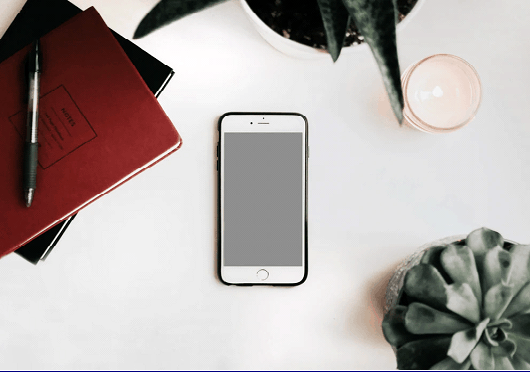Email is one of the most commonly used means of communication these days, and with that comes a need for security. Encrypting emails can help keep your messages from falling into the wrong hands and offer protection when sharing sensitive information. But what exactly is email encryption, and how do you send encrypted emails using Gmail? In this blog post, we will cover the basics of email encryption, what it means for Gmail users, and how to send encrypted emails with Gmail easily.
What is encryption?
There are two main types of email encryption: S/MIME and PGP. S/MIME, or Secure/Multipurpose Internet Mail Extensions, is a standard that encrypts and decrypts messages using public key cryptography. PGP, or Pretty Good Privacy, is a different standard that uses public-key cryptography but has additional features, such as the ability to sign messages so the recipient can be sure of the sender’s identity.
Most email clients, including Gmail, support S/MIME. To use S/MIME encryption with Gmail, you must generate a public/private key pair and add your public key to your email signature. The recipient will then use your public key to encrypt their reply. Once you receive the encrypted message, you’ll use your private key to decrypt it.
PGP encryption is a bit more complicated, but it’s still possible with Gmail. You must install a browser extension like Mailvelope or GnuPG and generate a public/private key pair. Once you’ve done that, you can encrypt messages using the extension and send them just like any other email. The recipient will need to have the same extension installed and will use their private key to decrypt the message.
Why should you use encryption?
If you’re looking for a way to add an extra layer of security to your email communications, encryption is a great option. Encrypting an email means that only the intended recipient can read the message’s contents – not even the email provider can access it. Encryption is a good idea if you’re sending sensitive information via email.
There are two main ways to encrypt your email: through an email service offering encryption or using your own encryption software. If you use an encrypted email service like ProtonMail or Tutanota, your messages will be automatically encrypted before they’re sent. Or, if you prefer to use your encryption software, there are several programs available (like Gpg4win and GnuPG) that can be used to encrypt individual emails.
Whichever method you choose, encryption is a powerful tool for keeping your emails private and secure.
Why send encrypted emails?
There are several reasons why you might want to send encrypted emails. Perhaps you’re sending sensitive information that you don’t want anyone else to be able to read. Or maybe you’re worried about email snooping and want to ensure your messages are secure.
Whatever the reason, sending encrypted emails is relatively easy to do, and there are several different ways to go about it. In this article, we’ll show you how to encrypt your Gmail messages using two other methods: PGP encryption and S/MIME encryption.
PGP (Pretty Good Privacy) encryption is a popular method of email encryption that uses public-key cryptography. With PGP, each user has two keys: a public key that anyone can use to encrypt messages sent to them and a private key that only they can use to decrypt those messages.
S/MIME (Secure/Multipurpose Internet Mail Extensions) is another form of email encryption that uses digital signatures and certificates instead of public-key cryptography. S/MIME is less widely used than PGP but is compatible with a broader range of email clients and devices.
Both PGP and S/MIME encryption can be used with Gmail, and both provide high security for your emails. So which one should you use? It ultimately comes down to personal preference, but we recommend PGP because it’s generally considered more secure than S/MIME.
How to encrypt your Gmail messages using PGP?
To encrypt your Gmail messages using PGP, sign into your Gmail account and click the “Inbox” button. Then, click the “Send” button, and select the “Encrypt message” option.
Next, enter your PGP encryption key into the “PGP public key” field and your PGP encryption password into the “PGP encrypted password” field. Click on the “Encrypt message” button to finish setting up your PGP encryption.
Note: Make sure that you keep both your PGP public key and PGP encrypted password safe! If someone could get hold of either of these items, they could decrypt your email messages.
How to encrypt your Gmail messages using S/MIME?
To encrypt your Gmail messages using S/MIME, sign into your Gmail account and click the “Inbox” button. Then, click on the “Mail Settings” button (or choose View > Mail Settings from the main menu), and select the “Security” tab.
Next, click the “Use S/MIME for main content” link to open the S/MIME settings dialog box. In the “Encryption” section, select the “Email messages” checkbox to enable S/MIME encryption for your Gmail messages.
Next, enter your S/MIME encryption key into the “SMIME Secured Message Encryption Key” field, and enter your S/MIME encryption password into the “SMIME Encrypted Password” field. Click on the “OK” button to finish setting up your S/MIME encryption.
Note: Ensure you keep your S/MIME encryption key and S/MIME encrypted password safe! If someone could get hold of either of these items, they could decrypt your email messages.
How to send an encrypted email in Gmail?
If you want to send an encrypted email, you will need to follow these steps:
- Open a new Gmail account.
- In the “Inbox” tab, click on the gear icon in the top right corner and select “Settings. “
- Under “Send & Receive,” click on “Encrypt Email.”
- Enter your password and select “Start Encrypting Now.”
- Click on the blue arrow next to your name in the “To” field, and select “Addresses (Gmail).”
- Please select the recipient’s email address from your contacts list and click on the green checkmark next to it.
- Please type your message into the text box below and click the blue button at the bottom of the screen to send it!
How to set up PGP encryption for Gmail?
If you’re looking to encrypt your email communications using the popular Gmail service, here’s how to do it:
- Log in to your Gmail account and click on the “Inbox” button at the top of the page.
- In the “Inbox” window, click on the gear icon in the upper-right corner and select “Settings.”
- On the Settings page, under “Security,” click the “Encryption” tab.
- In the Encryption pane, under “Mail encryption (GPG),” click the toggle button to turn on encryption for your Gmail account. You’ll then be prompted to enter a passphrase to encrypt your messages with GPG. Remember this password, as you’ll need it later when you send encrypted emails from your Gmail account.
- In addition, you can also choose to encrypt specific folders within your Gmail account by clicking on the corresponding folder icon and selecting “Enable encryption for this folder.” You’ll then be prompted to enter a passphrase to encrypt that folder with GPG. Again, remember this password in case you need it later when sending encrypted emails from that particular folder.
What are the benefits of using encryption?
There are several benefits to using encryption when sending an email. Encrypting your message creates a secure channel between you and the recipient. This prevents anyone from eavesdropping on the conversation and stealing information that could be harmful or embarrassing if it were to get leaked. Additionally, encrypted messages are complex for anyone except those with the correct decryption key to read, meaning that even if someone managed to intercept your message in transit, they would not understand what was being said. Finally, encryption can also help protect against cyber-attackers who might try to steal your data by reading your email messages.
Are there any drawbacks to using encryption?
There are a few potential drawbacks to using encryption when emailing. For example, the attacker could read the encrypted message if one recipient’s email account is compromised. Additionally, if two or more people encrypt their messages with the same key, someone who knows the key could read each user’s statement. Finally, some services (such as Gmail) don’t allow you to encrypt messages sent to non-Gmail users.
Alternatives to Gmail encryption
If you’re concerned about your privacy and want to encrypt your email traffic, there are several alternatives to Gmail encryption. You can use PrettyGoodPrivacy (PGP) or FinestMail to encrypt your emails. PGP is free and open-source software that allows you to create encrypted emails. You can also use FinestMail, a paid service offering more features, such as automatic encryption of incoming messages and the ability to encrypt multiple email addresses at once.
Conclusion
An encrypting email with Gmail is an excellent way to protect yourself and your personal information from prying eyes. By encrypting your messages, you can ensure that only the intended recipient can read them, ensuring their privacy. Additionally, if you are ever forced to hand over your encryption key, no one will be able to access the contents of your messages. Using encrypted email with Gmail is a great way to keep yourself and your loved ones safe from harm.











FIND US ON SOCIALS